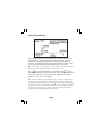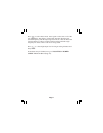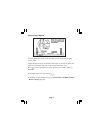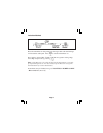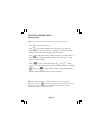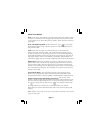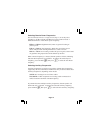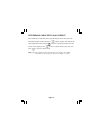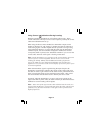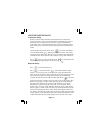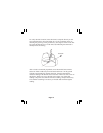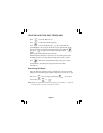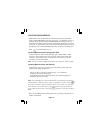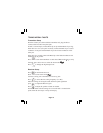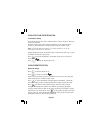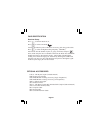
Using Current Indications During Locating
Both the Transmitter and Receiver will indicate cable current. These
current indications will help to select a trace frequency, identify the correct
cable and troubleshoot the set up.
When using the direct connect method, the Transmitter output current
number is displayed. A "LO" display, or number less than 50, indicates a
weak tracing signal. A number higher than 70 represents a strong tracing
signal. When the Receiver is used to find the cable near the Transmitter
connection point, the current number displayed in the Receiver should
correspond (within 5 points) to the Transmitter number if: you are over the
correct cable, and most of the signal is flowing in that cable.
Note: On the Transmitter every ten units on the current display represents
a factor of two in current magnitude. On the receiver, trace current
readings for 512Hz, 560 Hz and all additional auxiliary frequencies
(except 31.5 kHz) are now displayed in milliamps. For all other trace
frequencies every ten units on the current display represents a factor of two
in current magnitude.
When the Transmitter signal is applied using the Dyna-Coupler, the
Transmitter current display indicates the current in the coupler and not in
the cable. In order to get a measure of the cable current, point the Receiver
at the exposed cable about two feet from the Dyna-Coupler. This will be
the current number that should be used to identify the correct cable.
In general, when the Transmitter is set up to apply more current on the
target cable than any other cable, the cable can easily be identified because
the Receiver current reading will be highest.
Note: Since some of the signal in the cable will bleed into the earth, it is
expected that the Receiver current indication along the cable will decrease
gradually away from the Transmitter. This effect is more pronounced at
higher frequencies.
Page 14



